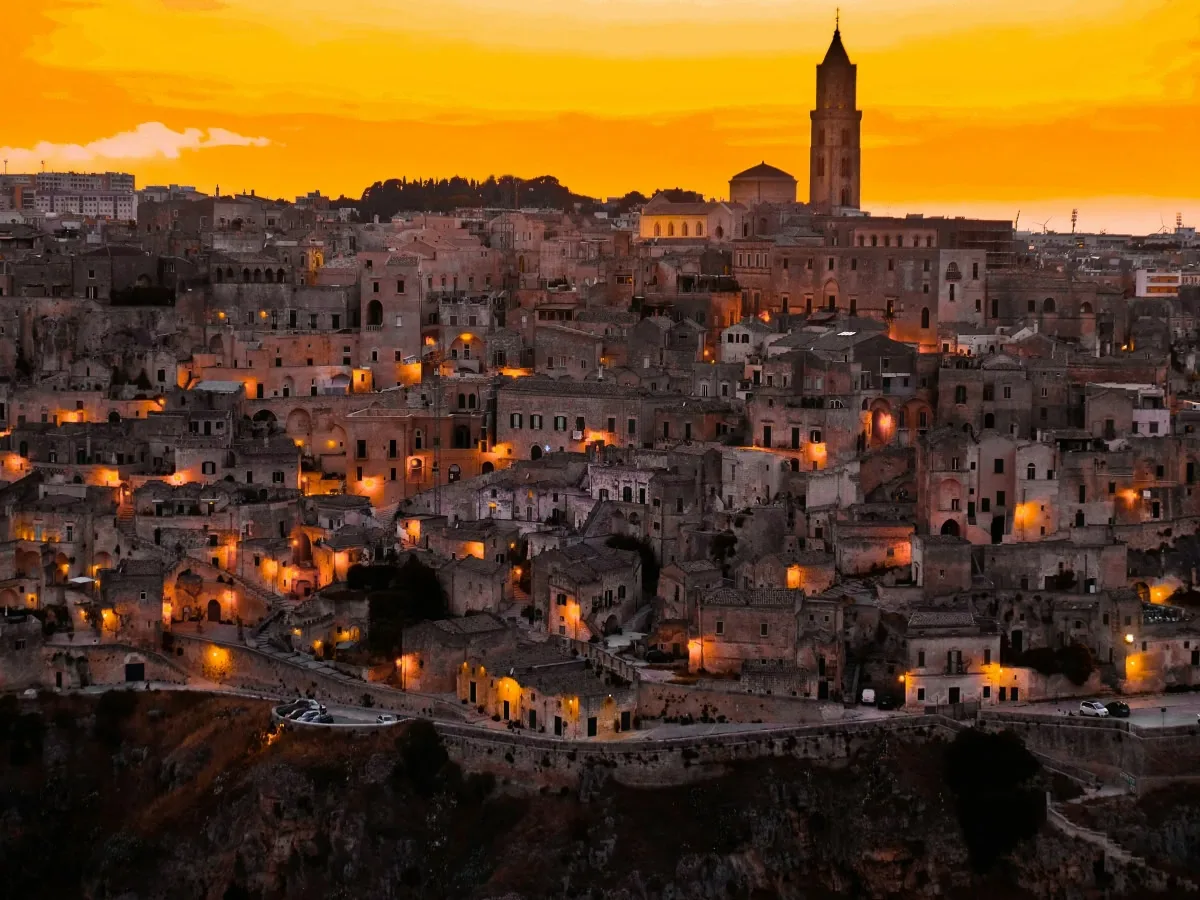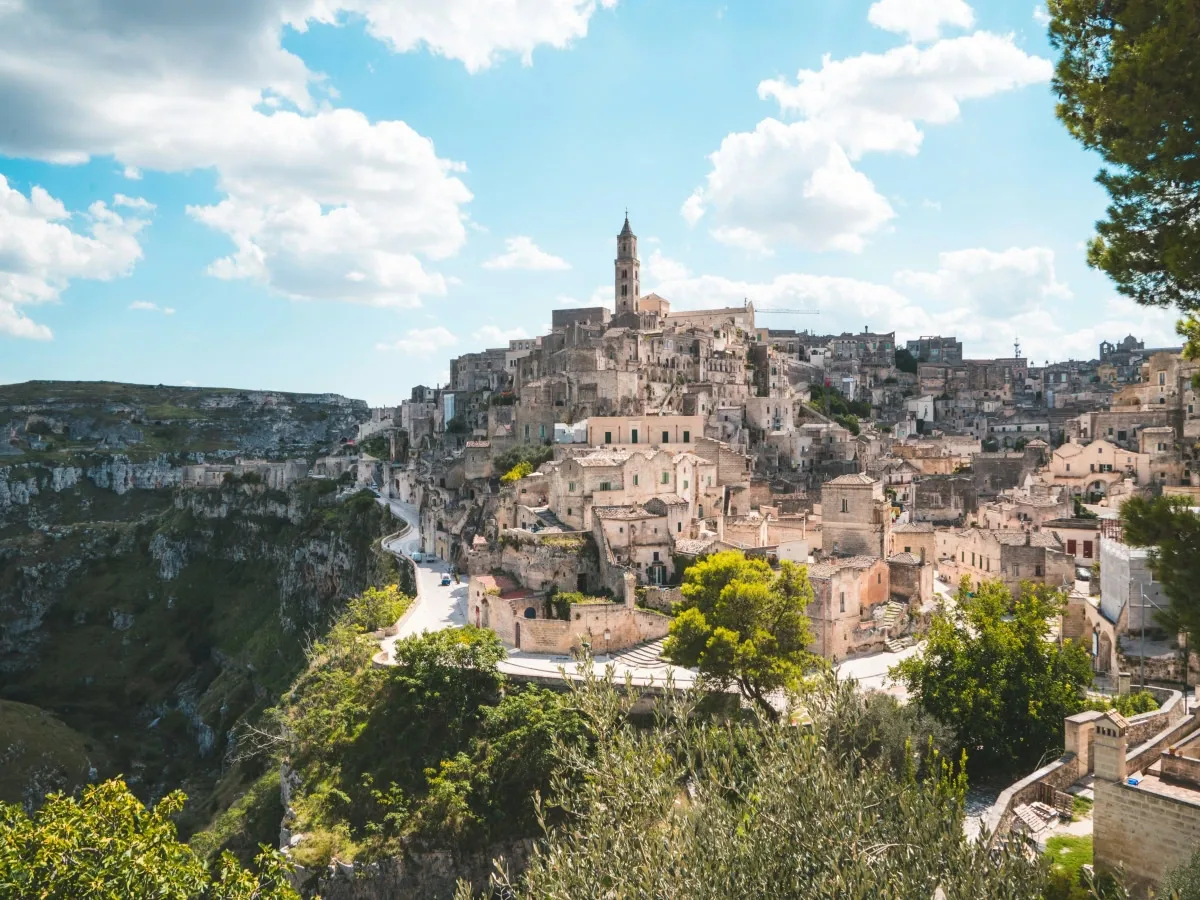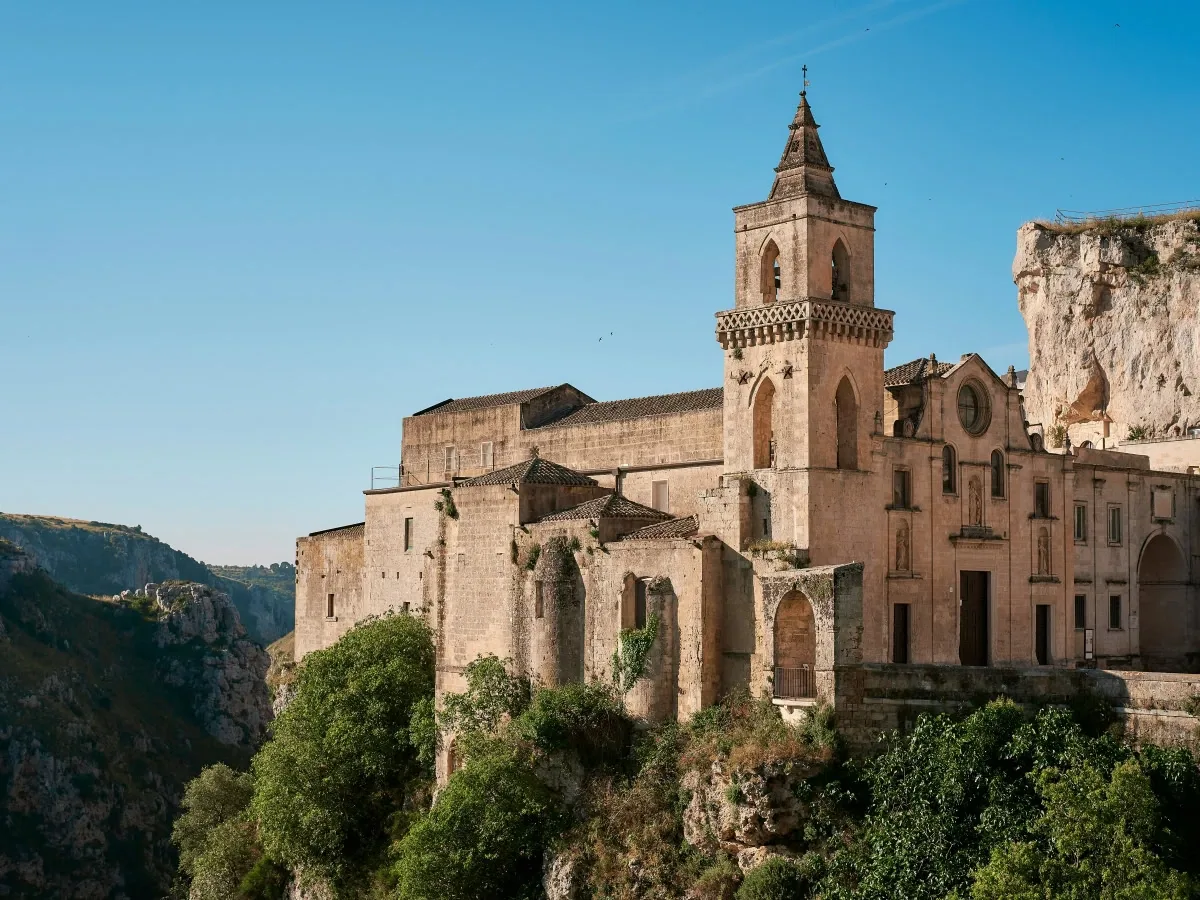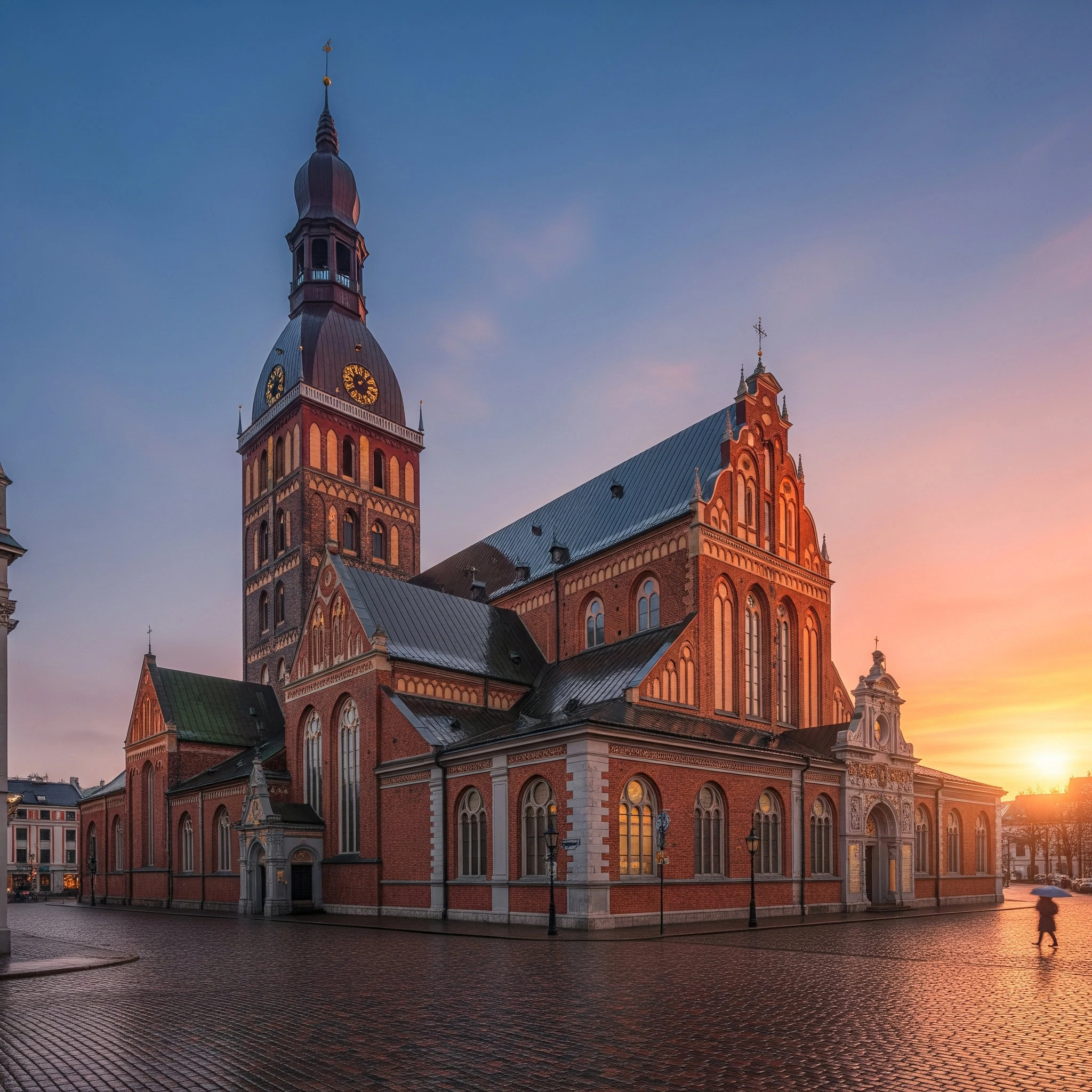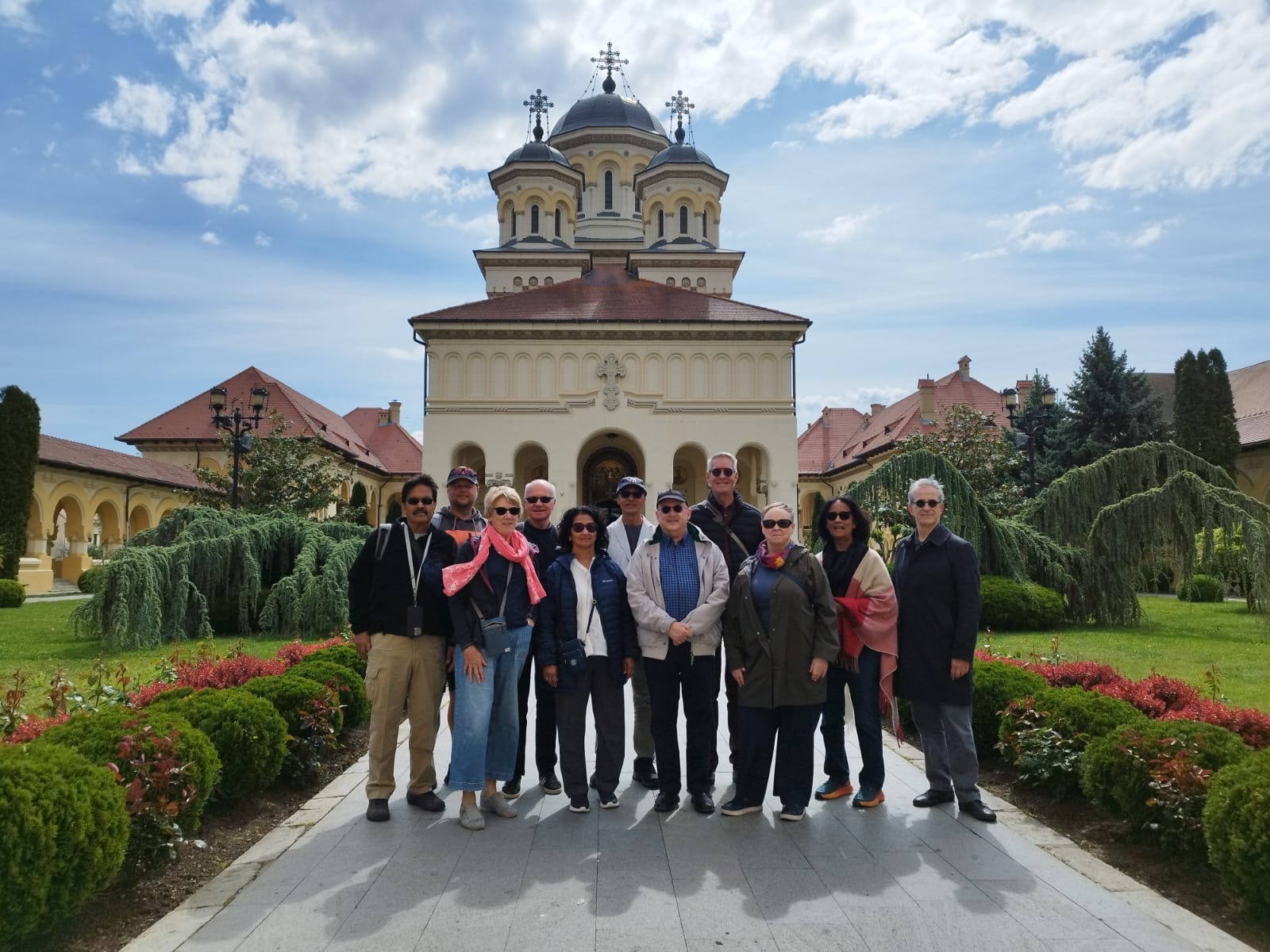Visiting Matera’s Sassi Districts: A Journey Through Time
Nestled in southern Italy’s region of Basilicata, Matera is a living testament to ancient ingenuity and resilience. Famous for its Sassi districts Sasso Caveoso and Sasso Barisano, Matera is one of the world’s oldest continuously inhabited settlements. These districts, carved directly into limestone rock are a UNESCO World Heritage Site, showcasing a remarkable blend of natural landscapes and human creativity. For travellers embracing slow travel, Matera offers off-the-beaten-path experiences that connect you deeply with its history, its regional cuisine, culture, and architecture. To fully immerse in the authentic cultural experiences Matera offers, it is essential to avoid tourist traps and explore genuine local life and traditions.
What is Slow Travel?
Born from the slow food movement, slow travelling is a philosophy that emphasises meaningful connections with places, cultures, and people. In Matera, slow tourism means wandering the Sassi districts on foot, engaging with local artisans, and savouring traditional experiences that reveal the soul of this ancient city. By opting for rail adventures or flight-free holidays, slow travelling can also reduce your carbon footprint while enjoying the journey, as well as the destination. Slow travel fosters connections with locals, builds meaningful relationships and creates cherished memories.
The Historical Tapestry of Matera’s Sassi
The UNESCO website states that the sassi of Matera represent “the most outstanding, intact example of a troglodyte settlement in the Mediterranean region, perfectly adapted to its terrain and ecosystem.” A troglodyte refers to a human who inhabits caves, and the troglodytes who made their homes in these Sassi around the year 7000 BC are believed to be the first human settlements in Italy. Matera’s history stretches back over 9,000 years. The Sassi districts are characterised by their rock-cut dwellings, cisterns, and churches, reflecting an unbroken timeline of human adaptation. Initially, these caves were homes for prehistoric communities, later evolving into medieval settlements. By the mid-20th century, the Sassi had become a symbol of poverty, but their UNESCO recognition in 1993 sparked a revival, transforming them into a cultural treasure. Today, Matera’s Sassi districts are celebrated for their unique architectural heritage and enduring cultural significance.
Timeline of Matera’s Evolution
- 9,000 BC: First signs of habitation in the area
- 8th Century: Construction of rock-hewn churches begins
- 1950s: Declared a national embarrassment due to extreme poverty
- 1993: Recognised as a UNESCO World Heritage Site
- 2019: Named European Capital of Culture
Sasso Caveoso: A Window into Ancient Living
Architectural Characteristics of Sasso Caveoso
Sasso Caveoso retains a rustic charm, with many dwellings appearing untouched by modernity. The district features ancient cave homes interspersed with rock-hewn churches and cisterns. These structures, carved into limestone, reflect a lifestyle closely connected to the land. Visitors will notice how the caves adapt seamlessly to the natural contours of the landscape, providing shelter and utility, reflecting the lifestyle and needs of the local people.
Cultural Museums and Local Culture Heritage Sites
To delve into deeper understanding of Matera’s history and the culture of local communities, visit the Casa Grotta di Vico Solitario, a restored cave dwelling that illustrates how families lived here centuries ago. Another highlight is the Rupestrian Churches, such as Santa Maria de Idris, adorned with medieval frescoes. These sites provide a tangible connection to Matera’s rich cultural heritage.
Guided Tour Experiences
Guided walking tours of Sasso Caveoso are highly recommended for an enriched experience. Knowledgeable guides bring the district’s history to life, sharing stories of Matera’s transformation from impoverished isolation to cultural prominence. Walking tours also highlight hidden gems, such as underground cisterns and ancient storage facilities.
Sasso Barisano: Where History Meets Modern Innovation
Distinct Architectural Elements
Sasso Barisano is a striking blend of ancient and contemporary. While it shares the rock-hewn architecture of Sasso Caveoso, many of its structures have been repurposed into boutique hotels, shops, and restaurants. These adaptations breathe new life into the district, making it a vibrant hub of activity.
Contemporary Uses of Ancient Spaces
Today, Sasso Barisano houses art galleries, cultural centres, and event spaces, showcasing how historical preservation can coexist with modern functionality. For example, the MUSMA (Museum of Contemporary Sculpture) is located within an ancient cave, offering a unique juxtaposition of old and new.
Art Galleries and Cultural Centres
Sasso Barisano’s cultural venues are a must-visit for art enthusiasts. The galleries and museums provide a platform for contemporary artists while celebrating Matera’s artistic heritage. These spaces also host workshops and events, fostering a dynamic cultural exchange.
Experiencing the Local Community and Daily Life in Matera
Matera, a city in southern Italy, is a perfect destination for slow travelling who want to immerse themselves in the local community and daily life like a local does. This ancient city, known for its unique cave dwellings, offers a glimpse into a traditional way of life that is often overlooked by tourists.
Slow Travel and Immersive Experiences in Matera
Embracing the Philosophy of Slow Movement
Matera is a perfect destination to travel slowly, where the emphasis is on taking the time to truly experience a place, its culture, and its people. The city, known for its ancient Sassi districts, invites visitors to explore at a leisurely own pace, allowing them to soak in the unique history and atmosphere of this incredibly destination. Slow travelling isn’t just about sightseeing; it’s about forming a deeper connection with the destination. This approach is part of the broader slow travel movement, which promotes a more deliberate and intentional way of experiencing travel.
Authentic Cultural Encounters
A key aspect of slow travelling in Matera is the opportunity to immerse yourself in rich traditions. Visit local artisans to witness the craft of pottery-making or weaving, or take part in workshops where you can try your hand at creating your own masterpiece. Matera is also known for its culinary heritage, and what better way to dive into the local culture than by visiting a traditional bakery to see the making of Pane di Matera, a bread cherished for its distinct flavour and texture. These experiences allow travellers to interact with the community, learning about centuries-old practices that continue to thrive in modern-day Matera. Engaging in basic conversations in the local language can lead to even more meaningful interactions, fostering deeper, meaningful connections with the people you meet. Through these connections, you’ll leave with a profound appreciation for the town’s heritage and its people.
Recommended Walking Routes
Walking is the perfect way to immerse yourself in the timeless charm of Matera. Take a leisurely stroll through the winding streets of the Sassi Caveoso and Sassi Barisano districts, where every corner reveals a new story, from ancient cave dwellings to beautifully preserved churches. The panoramic views of the city, with its stone houses clinging to the cliffs, are simply breathtaking. For a truly serene experience, venture beyond the city’s heart and follow the walking trails to the Murgia National Park. This tranquil landscape is home to prehistoric caves and stunning vistas, offering a peaceful retreat surrounded by nature. The park’s paths meander through historical sites, allowing you to walk in the footsteps of ancient peoples and discover the rich natural beauty of the region. This travel slowly paced exploration offers a perfect balance of cultural immersion and natural wonder.
Practical Guide for Visiting the Sassi Districts
Best Times to Visit
Spring (April to June) and autumn (September to October) are ideal for visiting Matera. During these months, the weather is mild and comfortable, making it perfect for exploring the ancient Sassi districts on foot. Additionally, the crowds are relatively manageable, allowing for a more relaxed and intimate experience of the city’s history and beauty. Summer can be quite hot, and winter, though peaceful, may have cooler temperatures, so spring and autumn offer the best balance of pleasant weather and fewer tourists.
Accommodation Options in Cave Hotels
Staying in a cave hotel is one of the most unique and immersive ways to experience Matera. Many of these hotels are restored ancient cave dwellings, offering guests the opportunity to sleep in a centuries-old structure while enjoying modern amenities. Popular options include Sextantio Le Grotte della Civita, which is known for its authentic and minimalist decor that retains the raw charm of the caves. Another excellent choice is La Casa di Lucio, where traditional cave living is combined with contemporary luxury. Staying in a cave hotel not only connects you to the history of the city but also provides an unforgettable experience that is quintessential to the Matera journey.
Transportation Tips
Matera is easily accessible by train from major Italian cities, with connections available from Bari, Naples, and Rome. Once in Matera, the train station is just a short distance from the Sassi districts. For travellers seeking a flight-free experience, consider taking rail journeys from the UK, which can be a relaxing and scenic way to reach southern Italy. Trains from the UK can connect through Paris or Rome, providing a smooth transition into Matera while minimising your carbon footprint. Once in the city, walking is the best way to explore, as the narrow, winding streets of the Sassi are best navigated on foot.
Photography Guidance and Etiquette
Matera’s scenic beauty, with its ancient cave dwellings and breathtaking views, is a photographer’s dream. However, it is important to respect the local customs and the privacy of its residents. Always ask for permission before photographing private homes or local people, especially in the more residential parts of the Sassi. Many of Matera’s churches and religious sites are sacred, and visitors should be mindful not to disrupt services or take photographs inappropriately. Additionally, while taking pictures in public spaces is generally allowed, it’s good practice to avoid using flash when capturing the interior of churches or other cultural sites. By respecting these guidelines, you’ll help preserve the integrity of the place and its people.
Culinary Journeys Through Matera’s Cave Kitchens
Matera, located in the heart of southern Italy, offers a unique gastronomic experience that perfectly complements the benefits of slow travel. The city’s cuisine reflects the rich culinary traditions of Puglia, where fresh, local ingredients take centrerr stage in local dishes. A dish like orecchiette pasta, paired with fava bean puree, offers a true taste of the region, showcasing the simplicity and depth of southern Italian flavours. One cannot visit Matera without sampling its renowned Pane di Matera, a traditional bread baked in stone ovens, with a texture and taste that has made it a staple in local cuisine. Each bite offers a glimpse into the history of the region, as this bread has been part of Matera’s culture for centuries. The slow food movement, which originated in Italy in the 1980s as a response to fast food, emphasises the importance of local cuisine, traditional cooking methods, and regional ingredients.
Cultural Significance and UNESCO Recognition
UNESCO World Heritage Site Status
The Sassi districts were designated a UNESCO World Heritage Site in 1993 for their outstanding representation of rock-hewn architecture and cultural heritage. This recognition has helped preserve Matera’s unique history for future generations.
The UNESCO status has revitalised Matera’s economy, attracting millions of visitors annually. Sustainable tourism initiatives have ensured that this growth benefits the local community while maintaining the integrity of the site.
Conclusion
Exploring Sasso Caveoso and Sasso Barisano isn’t just a trip; it’s a timeless journey of discovery. For those embracing the slow travel movement, Matera offers a unique opportunity to embrace the slow travel mindset, immersing yourself in the city’s rich history, vibrant culture, and breathtaking natural beauty.
Arrive in Matera, explore its historic streets, savour its renowned slow food traditions and discover the essence of slow travel with Adventures by Train, where every journey immerses you in Europe’s beauty and culture.
